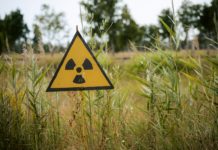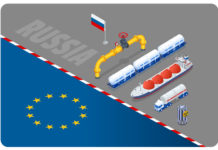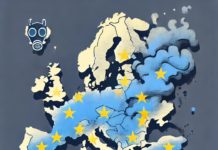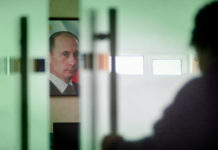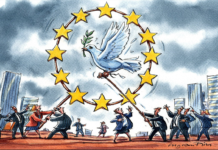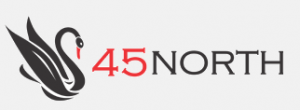In the past two months we have partnered with the International Republican Institute’s Beacon Project to study the vaccine conversation on Facebook in Romania (RO) and Moldova in 2021, as well as to gain insights into Russian and Chinese narratives on this topic. In this final report we compare the data gathered to date and draw a set of conclusions and recommendations.
Methodology
Data was extracted from CrowdTangle to sort the 20 Facebook public pages from each country that had the most posts containing a set of keywords referring to the vaccine conversation, like “vaccine” or “vaccinated”, or names of vaccines in circulation (not necessarily approved in one of the two countries), like “sinopharm”, “pfizer” or “astrazeneca”. Based on these keywords, the 20 pages that had the most posts containing one or more of these keywords in the first eight months of 2021 were selected. In other words, we looked at the pages that were most active on Facebook with regards to the vaccination process and vaccines overall in the first seven months of the year, for both Romania and Moldova.
The main challenge in sorting a relevant page samples is separating the Romanian and Moldovan Facebook ecosystems based on geography rather than language. Because location on Facebook is self-reported, we filtered the results based on prior knowledge of the media market in Moldova, making sure that the pages that resulted were representative. We also included StirileProTV, a top tier, credible Romanian news source, as a benchmark for the Moldova results. We limited ourselves to 20 pages to have a manageable data volume.
Based on the versatility of CrowdTangle, we were able to see granular information regarding post volumes, post types, network maps, interactions and reactions, etc. We used this information and coupled it with our understanding of the narratives that are being peddled in the Moldovan and Romanian Facebook spaces, from both Chinese and Russian sources, and issued recommendations based on this.
CrowdTangle analysis
When it comes to post volumes overall and for specific keywords. In figure one we see the two countries, side by side, with graphs showing the fluctuations of mentions for specific keywords, starting with “vaccine”. Not surprisingly, Romania has a much larger post volume on these keywords, due to the higher number of Romanian Facebook users. According to 2019 data, in Romania there were 8.9 million Facebook users, versus 0.8 million users in Moldova, so roughly a 10:1 ratio.

This total Facebook ratio, however, does not necessarily always to a head to head comparison. For example, for the keyword “vaccine” (and its associated forms), we have 22,410 mentions for Romania and 8,310 for Moldova, an almost 3:1 ratio. For “astrazeneca” we have the same 3:1 ratio, as well as for “pfizer”. For Chinese related keywords, “sinopharm” and “sinovac” we actually have more mentions in Moldova than in Romania, with a total of 619 mentions versus 480 respectively. The same goes for “sputnik”, with 210 more mentions in Moldova than Romania.
The top three most discussed keywords related to specific vaccines in Romania were “astrazeneca” (6,59k posts), “pfizer” (5,79k posts) and “moderna” (2,48k posts) and for Moldova they were “astrazeneca” (2,25k posts), “pfizer” (2,06k posts) and “sputnik”, (1,56k posts). The obvious difference is that three Western made vaccines were the most discussed vaccines on Facebook in Romania, while Sputnik played a more important role in the Moldovan discussion. These figures, as well as their fluctuations on the graphs reflect realities on the ground, milestones in the evolution of both epidemics, socio-economic conditions, different procurement strategies (EU-based procurement versus donation based), as well as different regulatory environments (EU regulated vs. non). The differences on the ground explain some of the main differences in the data that we have studied in our reports.
For example, in Moldova, the authorities decided to reach out to a more diverse range of vaccine producers, opting to buy vaccines that are not European Medicines Agency (EMA)-approved, but were on WHO’s emergency approval list (like CoronaVac, produced by Sinovac, or the Sinopharm made vaccine). Sputnik V is also available. In Romania, there are four available vaccines (AstraZeneca, Pfizer, Moderna and Johnson&Johnson) and this naturally reduced the vaccine discussion on Facebook regarding Sputnik V and the Chinese vaccines.
As we’ve mentioned in our prior reports on Moldova, another factor that we had to take into account is the country’s geopolitical profile, with Russia being a much more prevalent actor in all aspects of social, economic and political life, when compared to E.U member countries in the vicinity. This presence was definitely felt in the arena of vaccine diplomacy, with Moscow being a significant player. This further explains why the vaccine conversation on Facebook in Moldova has more mentions of the keyword “sputnik ” than Romania, a country with a much larger base of Facebook users.
The data in figures 2, showing the distribution of mentions of specific keywords per day, demonstrates that the overall trend of the conversation and posts is similar between the two countries, but there are some differences. Specifically, the volume of vaccine related keywords mentions remained at a higher level in Moldova than Romania, in the last two to three months, when compared to the first four to five months of 2021. In Moldova we even saw a spike on July 26, with 94 posts, with a big contribution of mentions of the keyword “sputnik”. This peek was further explained in our first six months report on Moldova.

Both Romania and Moldova have low levels of fully vaccinated people in the general population (27% – RO and 14% – RM) and the overall COVID-19 case count curve is similar in either country (something we have explored deeper in our first three reports). What is different is how the vaccination rate has evolved in the two countries, as seen in figure 3, with a permanent inflection point on June 14. From that point onward, Romania registered 2,178 mentions regarding vaccine related keywords (see fig 2), while Moldova registered 1,391 mentions. That’s about a 1.5:1 ratio between the volumes of mentions for the two countries, significantly higher than the 3:1 ratio mentioned above. This period also shows, according to figure 3, a higher pace of vaccination for Moldova, compared to Romania. Of course, the trend of the vaccination rate is influenced by a myriad of factors, such as government communication, vaccine production, vaccine supply chain or disinformation, but a lesser decrease of Facebook mentions of vaccine-related keywords in Moldova, paired with its increased pace of vaccination, might suggest a causal relation between the two, with Romania going in the opposite direction (lower vaccination rate, higher decrease in vaccine related keywords mentions on Facebook).

In terms of the network ecosystem of links and domains shared by the analyzed Facebook pages in both countries, as we have mentioned in more details in both country reports, linked at the top of this article, Romania and Moldova are again different. Specifically, Romania’s network distribution is skewed by the large share of two Facebook pages (pesurse.ro and stiripesurse.ro), while Moldova’s network is much more balanced and homogeneous.
One similarity between the two countries is the fact that in both cases, the Facebook pages that we have analyzed shared content from their eponymous or associated websites, which encourages the formation of social media bubbles, meaning that if people follow just a small subset of pages, they will see little to no outside information on their wall.

Chinese narratives: examples and overview
Because the original epidemic of COVID-19 started in Wuhan, with major geopolitical and political implications for the Communist Party, vaccine diplomacy and anything related to the coronavirus is of utmost importance for Beijing, which aims to control the global narrative on COVID-19’s origin, the handling of the epidemic and the development and distribution of vaccines. As we have seen in previous reports, Chinese narratives in Romania and Moldova mostly follow the party dogma on propaganda, with minimal adjusting to local specifics. Even though there is a Facebook page in Romanian from China Radio International (CRI), it did not show up in our data, because we have limited ourselves to the top 20 Facebook pages sorted by number of posts with mentions of the discussed keywords. The CRI Facebook page has a strong following (approx. 412K page likes) with regular posts but, it seems, it was not that active in terms of vaccine related posts to make it in the 20 page line-up.
Nevertheless, we looked at their social media presence, as well as the website, and tried to make sense of the most pervasive narratives that we are distributed in Romanian. In order to have a baseline idea for what the CCP’s strategy is, we looked at this very useful study called Pandemics & propaganda: How Chinese state media creates and propagates CCP coronavirus narratives by Vanessa Molter & Renee Diresta from the Cyber Policy Center, Stanford University. The authors also used CrowdTangle to try to determine the CCP’s social media English language propaganda strategy at the very beginning of the pandemic (January – March 2020).
From their study of the early days of the pandemic, we can gain some very useful insights on how the CCP wants to steer and control the global narrative regarding the pandemic. Three recurring behaviors were identified: focusing a significant share of coverage on positive stories, adjusting narratives retroactively, and using ads to spread messaging. In terms of narratives, the early days of the pandemic showed how important it is for the CCP to put a positive spin on any news regarding the handling of the pandemic, typically, in contrast with a negative portrayal on U.S. efforts to manage the epidemic.
This data-based insight is confirmed with the data that we have been looking at in our previous reports when it comes to vaccines and vaccination, especially the part of praising the Chinese strategy against the coronavirus and heavily criticizing the American response and America in general. For example, in our July report for Moldova we discussed an interview with China’s ambassador to RM, where he praised his home country’s response, with subtle mentions of other countries who did not manage the epidemic, in his opinion, as well as Beijing. When it comes to the pandemic in China, this positive spin is present in almost all of the content CRI posts on its website and Facebook.
As pervasive as this positive spin is also an anti-American sentiment, not only about the pandemic, but many other topics of interest for Beijing (Hong Kong, Taiwan, South China Sea, etc.). In basically all the narratives examined there was some form of an attack towards the U.S. reflecting political tensions, manifested across a number of fields including vaccine diplomacy. CRI reiterates Communist Party conspiracy theories, for example how American biological labs around the world pose a threat, including suggesting covid-19 was spread by American soldiers in Wuhan.
While it is important to understand direct Chinese propaganda, it is more important to see China’s overall diplomatic and geopolitical efforts seep into the mainstream media specifically, posts written by Romanian and Moldovan mainstream media organizations about the Chinese vaccines.
If we sort all the posts containing “sinovac” and “sinopharm” keywords by number of interactions, 4 posts from the total of 480 mentions have a number of interactions higher than 1,000. All of them are from Digi24, a mainstream, generally balanced media source. The first two (here, here) are news indicating studies that say that the efficacy of one of the Chinese vaccines is low and the other two (here, here) are about Viktor Orban and Hungary’s purchase of Chinese vaccines. In this case, we see Orban using Beijing as a tool to play a political game with Brussels, and by doing so enabling China’s vaccine diplomacy in the EU.
We think this indicates the value of indirect Chinese clout, the effects of its economic might and long-term diplomatic efforts that create an environment where a global China can offer options for an array of political actors. Thus, besides the studies cited by Digi24, China’s role into European politics, through its vaccine diplomacy with a willing partner, was the topic of the posts with most interactions. Moldova’s analogue outlook is not that different. From the total of 619 posts, 8 had more than 100 interactions (1, 2. 3, 4, 5, 6, 7, 8), most of them from ProTVChișinău, TV8.md or Agora.md, again, mainstream, generally balanced media sources. Three of them are about donations from the United Arab Emirates (UAE) and China and a purchase of Chinese vaccines and the rest are about the use of Chinese vaccines in different instances, for example, vaccination marathons. As we have explained in previous reports, China’s vaccine diplomacy in Moldova was significant in terms of doses purchased and donated, rivaling in volume more traditional players, like Romania, the EU and Russia. In Moldova’s case, China does not need to invest in a dedicated media organization for the country because its overall diplomatic effort, especially in economic terms, gains traction in the local, mainstream media, naturally, generating content that builds China’s image in said country.
Russian narratives: examples and overview
We have seen in our previous reports some of the preferred Russian narratives used in Romania and Moldova. Naturally, Russia’s approach, via Sputnik and its two Facebook pages in Romanian, is different for each of the two countries but, at the same time, it has some similarities. Some of the main pandemic-related Russian narratives that we have identified are:combating/distorting the efficacy of Western-made vaccines and amplifying their side-effects; citing controversial/polarizing public figures whose opinions are aligned with Sputnik’s; criticize the EU/US response to the pandemic, in comparison with Russia’s response.
In order to better understand Russia’s strategy with regards to Romania and compare our own findings, we referred to this two part article (part I, part II) called Pursuing Wickedness: Russia’s Disinformation and Propaganda in Romania. This article written by Peter Gross, a well-known scholar in Romanian studies, for the Georgetown Journal of International Affairs, helped us to get a better idea of what is Russia’s strategy in terms of propaganda and disinformation in Romania. The gist of this strategy is vilifying the EU, NATO, the US and the Romanian political and institutional actors that support Romania’s Western trajectory.
This is widely confirmed in our reports when looking at Romania. Anti-American sentiment is very often framed in the narrative that Romania is an “American colony”, a narrative where it is postulated that Bucharest is completely subservient to Washington, to the detriment of its people. We looked at one such example in our Romanian January-June report, when Sputnik cited a controversial individual in Romania, who said, “vaccinated people are like cattle” and that “Romania is an American colony”. Anti-EU sentiment is also present in our examples from the previous report, with several examples where Sputnik tried to portray the EU in disarray when it comes to managing the pandemic.
Something interesting that we find out in the Georgetown report is that Romanians are unlikely to embrace “a Russian solution” to problems, or Moscow as a friend, with Romania being more resilient to Russian propaganda and disinformation, based on its history with Russia and communism. This makes Russia’s task of implementing its strategy more difficult and marginal in its overall list of priorities in Eastern Europe. This might be seen in our data, with Sputnik being a rather marginal presence in the vaccine conversation on Facebook in Romania.
When it comes to Moldova, due to different social and historical circumstances, the population’s resilience to Russian propaganda is lower than Romania’s. Moldova is a more open battlefield for Russian influence, due to several factors such as Moldova not being a NATO/EU member, the fact that approximately 10% of the population speaks Russian and pro-Moscow parties are a major political force. This makes Moldova a more important priority for the Kremlin.
Also, a notable difference between Romania and Moldova when it comes to the pandemic and Russia is that in Moldova Sputnik V is an authorized and widely used vaccine, which means that Russia was much more invested in this country. As we have discussed, there were a significant number of posts from Sputnik concerning the benefits of the Russian made vaccine and the downsides of Western vaccines (1,2,3). Russia’s interest in promoting the vaccine, besides the obvious benefits of vaccine diplomacy, is also an economic one because Sputnik V development was funded and coordinated by the Russian Direct Investment Fund, Russia’s sovereign wealth fund.
Romania, as part of the EU, and a country sharing the same language and history with Moldova, is probably the most important external partner that Chișinău has, and these facts are not ignored by Moscow. We saw examples of Sputnik posts trying to discredit Romania in front of Moldovan public opinion. (4,5), which is a specific sub-narrative of the larger strategy of discrediting the EU.
Thus, Russia’s strategy in Moldovais more aggressive and closer to what is defined as social media warfare, the dynamics that drive social media warfare rooted in the conflict inherent between social institutions, governments, corporations, and groups or individuals that are willing to stage an insurgency or protest through an online battlefield. (Social Media Warfare by Michael Erbschloe) Also, there are some offensive social media warfare tactics such as trolling or nullifying opponents, in line with the social media warfare concept, strategies which characterize narratives promoted by Sputnik publications as we observed.
One similarity that we have seen being used in Romania and Moldova several times is amplifying opinions from controversial individuals on topics of interests. Often the most popular content (in terms of interactions) contains controversial information or opinions that certainly can influence a part of the population that already adopted a vaccine skeptic attitude. For example, the Sputnik Moldova Romania Facebook page repeatedly promotes the opinions of some influential people who, at a superficial first look, might seem trustworthy in the public’s eye. This strategy is used intensively when promoting the Russian vaccine. Two examples that we have detailed prior: „Dr. Alberts: Net benefits of the Russian vaccine compared to existing RNA vaccines in Romania ” and The Russian Sputnik vaccine is a better option. This tactic is good at generating interactions and viewership, based on the popularity of the cited individuals and the sensationalism of their statement, which makes it attractive to Romanian mainstream media organizations. In our Romanian report we looked at this and saw how media sources (not Sputnik, but mainstream sources), with a general populist discourse, were encouraging this trend by promoting opinions from vocal anti-vaxxers, such as Monica Pop, an ophthalmologist that debates the efficiency of the vaccines, saying that they are not 100% safe, not taking into account that neither the producers or the authorities have officially claimed that they would be but highlighted the cost/benefit ratio in favor of vaccinations. This trend has the potential to be a larger threat to the vaccination process than what Sputnik publishes because it reaches a far larger group of people.
Conclusions
Romania and Moldova share a lot of similarities in terms of the vaccine conversation on Facebook but the differences between the two countries probably incapsulate more insight for policy makers and stakeholders.
- Moldova had a more balanced vaccine conversation on Facebook than Romania, in terms of the distribution of links shared by the analyzed pages; Moldova had a more active vaccine conversation than Romania, relative to its Facebook user base, especially in the last 2 months of the study (June and July), which coincided with an inflection point in the vaccination rate, in favor of Moldova, compared to Romania.
- When it comes to Russia, it is more present in Moldova in terms of volume than in Romania, reflecting its foreign policy priorities (“sputnik” keyword in Moldova outnumbered in number of mentions Romania, despite having a 10 times smaller Facebook user base); Russian narratives revolve around country specificities, regularly amplifying controversial messages from well-known individuals and interjecting into national politics and social issues; in terms of vaccines, Russia’s communication strategy via Sputnik was simple: denigrate Western vaccines and promote Sputnik V, usually using skewed or misinterpreted information;
- Regarding China, it did not adjust its narrative strategy to country specificities, at least not on the level of Russia (there is no dedicated Facebook page or website for Moldova, just the Romanian Service from China Radio International); the stakes of the global narrative surrounding the pandemic (origins, management, vaccination, etc.) is of critical importance for Beijing, thus all the party dogma trickled down to the analyzed sources; Chinese propaganda, at least in Romania and Moldova, does not use national political or social issues directly; One common thread of Chinese content is anti-American, reflecting current geopolitical realities;
- We identified two worrying trends that are not necessarily directly connected with Russian or Chinese propaganda: some mainstream media organizations, with national coverage and large audiences, do not hesitate to amplify controversial messages from anti-vaxxers, chasing views and controversy and, inadvertently, helping malign actors to achieve their goals (especially Russia); both Russia’s and China’s clout on the global stage and in the two countries cannot be ignored entirely by mainstream media organizations, which means that news that stem from either Moscow or Beijing, infused with propaganda, reach the mainstream media and are disseminated in the larger population (see our example of Viktor Orban);
Recommendations
Our recommendations are primarily targeted towards institutional actors and policy makers:
- Invest in community, in-person, recurring programs that promote media and digital literacy and that give the population a set of simple set of tools that they can use to deflect propaganda, especially relating to the pandemic and vaccines;
- Introduce new curriculum in schools that promotes media and digital literacy, ideally as a separate discipline available in different degrees of complexity, depending on the age of the students;
- Simplify and expand the public funding process (grants) for NGOs and media organizations with a demonstrable track record of combating fake news, in order to encourage a robust, self-governing community of independent fact-checkers that can respond in real time to the large volume of disinformation we are subjected to;
- Involve the private sector in combating disinformation; a country plagued by disinformation, especially during a pandemic with real life economic consequences, does not constitute a healthy business environment; relevant private actors can be incentivized (through fiscal means) to allocate budgets dedicated to combating misinformation, specifically in their area of interest; when it comes to vaccines, private healthcare and pharmaceutical companies can wield large budgets and reach large audiences to combat disinformation that usually harm their business as well;
- Use government media resources, particularly public broadcasters, in a more efficient manner, with dedicated programs that tackle disinformation; for example, broadcast short messages debunking common malign narratives in less than 1-2 minutes, in the same way messages regarding personal health are broadcasted;
- Invest in and use the latest technology available in identifying fake news, such as AI/machine learning, and transfer this means in the hands of an independent community of reliable journalists/NGOs;

